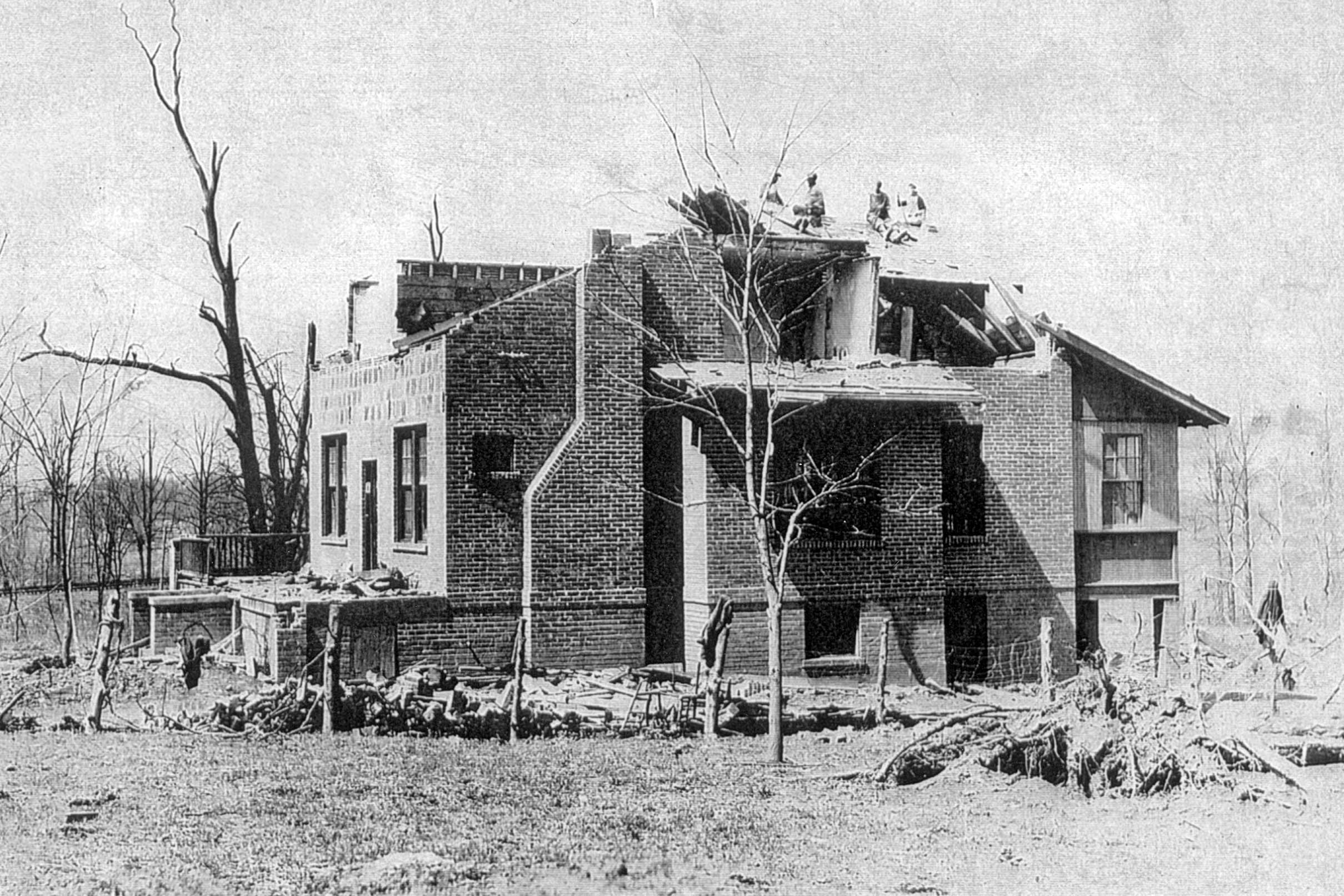
"Give Me All You've Got"
Inquisitive spectators gather shortly after the holdup of the Silver Spring National Bank in this Oct. 27, 1928, Evening Star photo. This brick bank was designed and constructed by John M. Faulconer and Frank B. Proctor in 1925, also Silver Spring residents. Courtesy Washingtoniana Division, DC Public Library

Gunfire in the Street
Silver Spring National Bank’s (from left) Ira C. Whitacre, cashier; James H. Cissel, founding and long-time president; and Fred L. Lutes, assistant cashier, posed for the Oct. 27, 1928 Evening Star after the town’s first bank robbery. Whitacre and Lutes fired their personal pistols at the escaping robber. Courtesy Washingtoniana Division, DC Public Library

A Note of Our Own
Why is “Silver Spring” printed on this bill? “National Currency” was established by the National Banking Act of 1863, which chartered individual national banks to both guarantee their solvency and to raise money for the federal government. Over 12,000 banks issued their own bank notes featuring the institution’s name, a system that lasted until 1935. This $10 note was issued by the Silver Spring National Bank in 1920 and featured then, as now, a portrait of the first U.S. Secretary of the Treasury, Alexander Hamilton. Courtesy Silver Spring Historical Society and J. Fred Maples

90 Years Later
The original brick portion of the bank, painted a cream color in this photo, was built in 1925. The 16-foot-deep limestone facade was added in 1938. Also visible is the International Style addition at the rear, added in 1951. The building was demolished in 2015. Photo by Silver Spring Historical Society

Seeing the Light of Day
“The Silver Spring National Bank” carved into the 1938 limestone frieze was covered by signs of companies that occupied the building in its more recent years. The engraving was uncovered briefly in 2015, only to disappear within hours when the building was demolished. Photo by Silver Spring Historical Society

Community Visionary
For 50 years, from 1915 to 1965, banker and lawyer Thomas Howard Duckett guided the Silver Spring National Bank through mergers, Franklin D. Roosevelt’s 1933 “Bank Holiday” during the Great Depression, and World War II staff shortages with the implementation of “Women Power.” Duckett, whose law offices were on the top floor of the bank, played seminal roles in the establishment of the Washington Suburban Sanitary Commission in 1918 and the Maryland-National Capital Park & Planning Commission in 1927. Photo source: Fifty Years of Suburban Banking etc. 1915-1965

From Silents to Talkies
Silver Spring’s first movie theater, the SECO (owned by Suburban Electric Company), opened in 1927 at 8242-8244 Georgia Avenue. “London After Midnight,” starring Lon Chaney, was playing on March 28, 1928, the date this photograph was taken by Willard R. Ross. This silent film is one of the American Film Institute’s nine most wanted lost films. The theater closed in 1991. Courtesy Jerry A. McCoy

Calm after the storm
Titled “Scene of the Battle,” this photograph of the Silver Spring Liquor Dispensary at 8400 Georgia Avenue appeared in the Dec. 7, 1933 Washington Herald. An estimated 1,500 customers besieged the dispensary the night before to celebrate the repeal of Prohibition and finally purchase legal liquor. Courtesy Washingtoniana Division, DC Public Library

Another Floor Added
This “Eaglecolor” postcard, circa 1954, featured a photograph of the Guardian Building, 8400 Georgia Avenue, taken by R. F. Body. Every day the two loudspeakers to the left of the clock broadcast the hours of the day, the Lord’s Prayer at noon, and classical music at 6:00 P.M. The building was demolished for the widening of Bonifant Street and its sidewalk, so 8402 is the lowest-numbered address on the block. Courtesy Jerry A. McCoy

1923 Tornado
On Thursday, April 5, 1923, at approximately 3 p.m., a tornado ravaged the homes and families living just west of Georgia Avenue, on Oak, Maple and Cedar avenues (now Bonifant St., Dixon and Ramsey avenues, respectively). It injured four people, destroyed five houses, partially wrecked a dozen others, but miraculously killed no one.
Dr. & Mrs. Frederick E. Dudley Jr., owned a wood frame home at 8404 Maple (now Dixon) Ave. Having just moved in three weeks earlier, Dr. Dudley was quoted in the Evening Star, “We had watched it eagerly and hourly during the course of its construction and we were just getting comfortably settled.” Courtesy Silver Spring Historical Society

1923 Tornado
The tornado on April 5, 1923 was “over in no time” as the Evening Star reported. It lasted less than a minute. Its path of destruction measured an estimated 600 feet wide and a quarter of a mile long. Damages totaled more than $100,000 (in 1923 dollars).
On the corner of Bonifant and Ramsey, where the Greenberg & Bederman law offices are now located, William M. Cowell, a carpenter, and John C. Cowell, a bricklayer, owned a home at 1109 Oak Ave. The roof blew away and west facade (which faced the B&O railroad tracks—the dark horizontal line visible at left) crumbled, and the house was one of five deemed destroyed. Twelve more were damaged. Courtesy Silver Spring Historical Society











